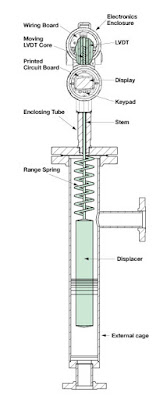 |
| Example of a diaphragm pressure gauge Courtesy Wika |
The article is included below and provides a comparison of the differences between Bourdon tube and diaphragm operating mechanisms, focusing on design and operational features of diaphragm pressure gauges and the range of application criteria for which they may be the best choice.
Pressure gauges are utilized in most operations where fluids are moved through a system. Gauges, though mechanical in operation, remain a mainstay of fluid operations because of their reliability, local display, ruggedness, and lack of reliance on electric power for operation. There are countless pressure gauge configurations to suit every application. Specifying the best gauge configuration for an application is accomplished by combining your process knowledge with the application expertise of a product specialist.




